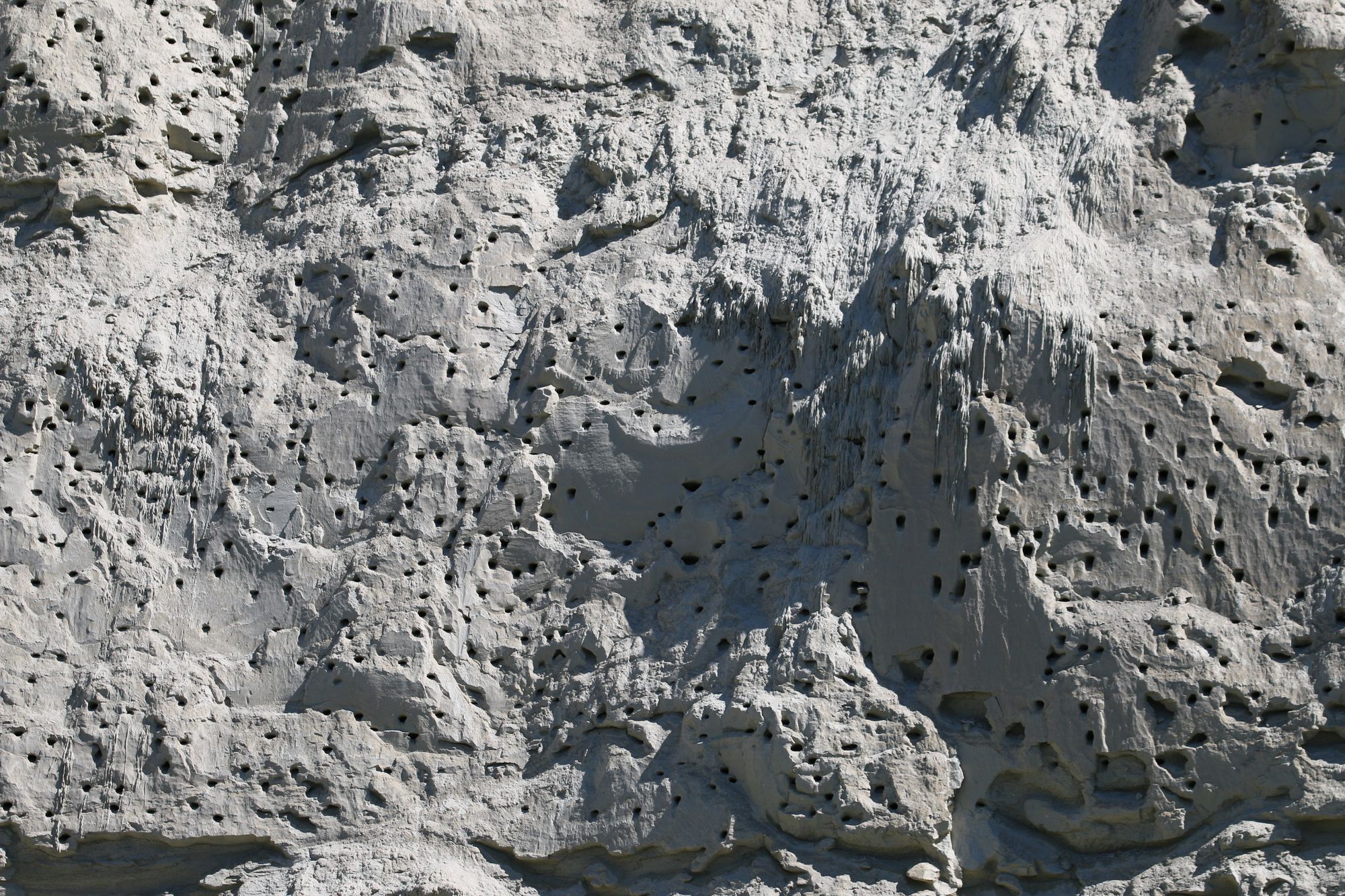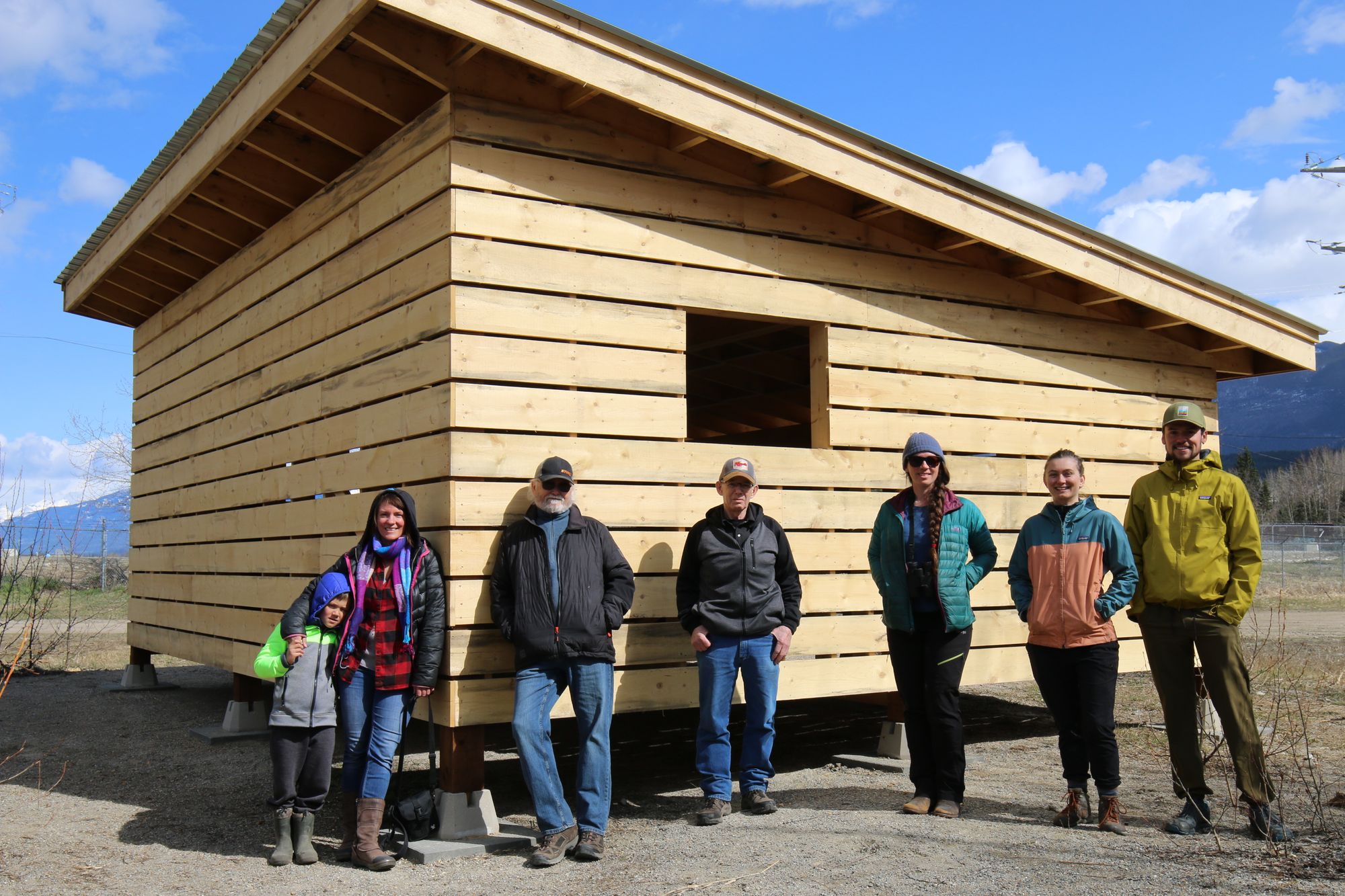The Upper Columbia Valley, stretching 180 km from Canal Flats to Edgewater, British Columbia, is one of the largest wetland complexes in North America as well as the only undammed stretch of the Columbia River Valley. It is home to 6 out of 7 species of swallows that live in British Columbia, 2 of which are threatened with extinction.
“In my experience, people tend to think that swallows are everywhere and are doing well,” says Rachel Darvill, Project Biologist for Wildsight Golden’s Upper Columbia Swallow Habitat Enhancement Project, “but that’s not the case.” Over the past 40 years or so, the Bank Swallow population has declined by 98% and Barn Swallows by 76% due to reduced food, habitat destruction, vehicle collisions, and climate change (amongst other cumulative factors).
It’s hard to address large-scale issues such as climate change, but there are ways to improve habitat. The Upper Columbia Swallow Habitat Enhancement Project (UCSHEP) is a 5-year project undertaken by Wildsight Golden in collaboration with a number of community partners and sponsors to identify, restore, and enhance nesting sites for Barn and Bank Swallows in the Upper Columbia Valley. Nesting sites for Bank Swallows are limited because the birds have very specific requirements. They’re looking for a large, low-elevation, nearly vertical bank with soil that is soft enough for them to dig burrows but solid enough that the hole maintains its shape and doesn’t collapse. Barn Swallows nest on buildings, but people often remove their nests (they are seen as a health concern or nuisance) or buildings are torn down and replaced with structures not suitable for nest attachment (closed-in buildings, steel/smooth exteriors that nests slide off of).

Identifying Nesting Sites
A major initiative in 2020 was to locate swallow nesting sites in the Columbia Valley. Rachel had previously spent 5 years conducting the Columbia Wetlands Waterbird Survey with the assistance of 230 volunteers and knew the value of involving citizen scientists. “People love being involved. It’s a great way to expand local ecological knowledge and collect data on a large scale with limited resources.” The same process is being employed with the swallow habitat project. 69 volunteers, ranging in age from school children to recent graduates and retirees, were involved in the first year of the project. They identified 96 active Bank Swallow colonies, several Cliff and Northern Rough-winged Swallow colonies, 3 large Barn Swallow colonies, as well as several small Barn Swallow nesting sites.
Interested in participating? Volunteer information and training sessions are being held on May 30 at Columbia Lake (near Fairmont) and on June 7 near the Golden Municipal Campground. Email swallows@wildsight.ca to register.
Protecting & Restoring Nesting Sites
Swallows were taking advantage of a cliff in Windermere Lake Provincial Park, but it had been negatively impacted due to an unauthorized trail through the site as well as from people playing on the slope and interfering with the burrows. The site has now been roped off, signage has been installed, and local volunteers with the Lake Windermere Ambassadors, UCSHEP staff, and BC Parks staff have been visiting the site to keep an eye on it. The site was also restored to make it more vertical and better suited as nesting habitat.
The UCSHEP has also worked with the Nature Trust of BC to enhance the nesting site at the Trust’s Edgewater property. In coming years, Rachel hopes the project will be able to restore at least one additional nesting site and they are exploring the possibility of creating artificial nesting structures for Bank Swallows.
A Shuswap Band member monitored some Bank Swallow colonies on their land in 2021. Rachel is looking forward to working with the Shuswap Band, the Akisqnuk First Nation (Ktunaxa), as well as the Métis Nation Columbia River Society on interpretive signage providing Indigenous perspectives on swallows to be placed at Barn and Bank Swallow nesting sites in 2022.

Creating New Nesting Sites
The UCSHEP has begun erecting large artificial nesting structures (12x18 ft. or 18x24 ft.) in areas where they know there are large colonies of Barn Swallows or in areas where they know structures have been (or will soon be) removed. Agreements with the landowners ensure that the buildings are only used by swallows and there will be signage to explain their purpose.
The Lake Windermere Rod and Gun Club has provided nest cups to help make the structures more attractive to nesting swallows. The nest cups are also being erected on pre-existing structures.
Tracking Swallow Migration, Foraging and Roosting Sites
A major undertaking in 2022 and 2023 involves tagging approximately 100 Bank Swallows and establishing Motus Wildlife Tracking Stations. Very little is known about where Bank Swallows go on their fall migration or the location of their wintering grounds. It’s possible they go as far south as Chile. Tagging the birds will provide invaluable information about migratory timing, routes, stopover locations, and winter areas. Once this information is available, the project hopes to collaborate with international partners to conserve and recover swallow habitats and populations on a year-round basis.
On a local level, tagging the swallows will help to identify post-breeding feeding and roosting sites. The birds often gather in large numbers to feed before migrating, so it’s important to protect these lakeshore or vegetated areas and ensure sustainable activity in these locations.
The Motus Wildlife Tracking System is an international research network using coordinated automated radio telemetry to facilitate research and education on the ecology and conservation of migratory animals. The Bank Swallow Motus project is being carried out in collaboration with Environment and Climate Change Canada and BC Parks.
Wildsight
Wildsight Golden is a non-profit conservation and environmental education organization. Wildsight Golden’s principal objective is to maintain biodiversity and healthy human communities in and around the region. Their focus is on protecting the high ecological values of the Columbia headwaters region, which continues to be one of the richest and most biologically diverse regions in the world. They participate in government and community processes to promote the protection of clean air, forests, water, and overall biodiversity. Wildsight Golden works in partnership with Wildsight Regional and other Wildsight branches. They also work on strengthening ties with other sector groups in the local community to ensure that environmental protection is supported by a broad constituency.
This project would not be possible without program assistant, Verena Shaw, citizen scientists, our partners and major funders (CBT Ecosystem Enhancement Program, Fish and Wildlife Compensation Program, RDEK's Columbia Valley Local Conservation Fund). A full list of the organizations involved with this project can be found on the UCSHEP website. If you are interested in making a financial donation to the project, click here.
Photo credit: Rachel Darvill
Revised May 27, 2022
If you enjoyed this article, please share it with family, friends, and colleagues.
EcoFriendly West informs and encourages initiatives that support Western Canada’s natural environment. Like us on Facebook, follow us on Twitter, or subscribe by email.
